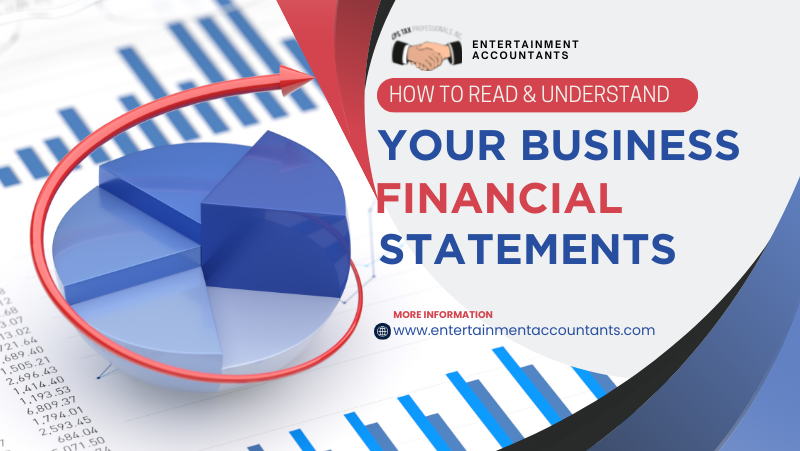Financial statements are more than just numbers—they’re the language of your business. Whether you’re running a small shop or managing a growing service business, understanding your financial statements can help you make better decisions, catch problems early, and plan for growth.
In this blog, we’ll break down the three most important financial statements and show you how to read them in simple terms.
Why Financial Statements Matter
Financial statements give you insight into the health and performance of your business. They help you:
- Understand where your money is coming from and going
- Evaluate profitability and cash flow
- Stay prepared for tax season
- Present clear data to banks or investors
There are three main financial statements every business owner should know:
- The Profit and Loss Statement (also called the Income Statement)
- The Balance Sheet
- The Cash Flow Statement
Let’s walk through each of them.
1. Profit and Loss Statement (Income Statement)
This shows your business revenue and expenses over a specific period—usually monthly, quarterly, or annually.
Key Elements:
Revenue (Sales): Total income from products or services sold
Cost of Goods Sold (COGS): Direct costs to produce goods or services
Gross Profit: Revenue minus COGS
Operating Expenses: Rent, payroll, utilities, marketing, etc.
Net Profit (or Loss): What’s left after all expenses are paid
What to Look For:
Is your revenue increasing month-over-month?
Are your operating expenses too high?
Is your business profitable after all costs?
This statement helps answer: Am I making money?
2. Balance Sheet
The balance sheet gives a snapshot of your business’s financial position at a specific point in time.
Key Elements:
Assets: What your business owns (cash, inventory, equipment)
Liabilities: What your business owes (loans, credit card balances, unpaid bills)
Equity: The value remaining for you (the owner) after subtracting liabilities from assets
Formula:
Assets = Liabilities + Equity
What to Look For:
Are your assets growing?
Are liabilities under control?
Is your equity increasing over time?
This statement helps answer: What is my business worth right now?
3. Cash Flow Statement
The cash flow statement tracks the actual movement of cash in and out of your business.
Sections:
Operating Activities: Cash from daily operations (sales, expenses)
Investing Activities: Cash spent on or earned from long-term assets (like buying equipment)
Financing Activities: Cash from loans or investments, and repayments
What to Look For:
Are you generating enough cash from your core operations?
Are you investing wisely?
Do you have enough cash to cover short-term needs?
This statement helps answer: Do I have enough cash to run my business?
Tips for Reading Financial Statements
Compare over time: Look at trends over several months, not just a single report.
Watch for red flags: Declining profits, rising debt, or cash shortfalls may require attention.
Use ratios: Simple ratios like gross margin or current ratio can reveal insights at a glance.
Ask your accountant: If something looks off or confusing, don’t hesitate to reach out for clarification.
Final Thoughts
You don’t need to be a financial expert to understand your business financials—but you do need to pay attention. Reading your financial statements regularly can help you stay on top of your performance, plan for growth, and make informed decisions with confidence.
If you need help organizing or understanding your statements, we’re here to support you. Let’s make sense of the numbers—so you can focus on running your business.

